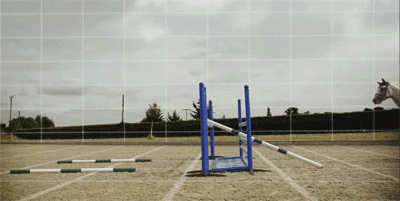‘I like training because I hate bad riding’ and 5 More Takeaways from the George H. Morris Gladstone Program
Oh George.
This Sunday marks the end of this year’s George H. Morris Gladstone Program, an annual opportunity for talented young showjumpers to learn how to develop their skills for team riding on the national and international level. But you don’t need to compete at Maclay to benefit from Uncle George’s (often delightfully cantankerous) teachings:
Pick up a book: Dang kids with their cell phones and their Insta-chats!
“People are too busy these days to study,” Morris said while shaking his head. “They go to horse show after horse show. Everything we learned at Gladstone so many years ago is extinct. Everybody should read and learn everything that they can. I was fortunate enough to start and stay at the top of the sport. I am 76 years old, and I had one great teacher after another throughout my career, but I supplemented my knowledge on the horse with knowledge in the books.”

[Youtube: Land Rover UK]
Don’t over jump. On the third day of the program, riders were faced with several different jumping exercises (details here). However, once the horse “got it,” George didn’t drill.
“Horses need to jump for a reason,” Morris said, “When they have learned, stop jumping. Do not over jump. ”
Drop those stirrups! As is his custom, George focused an entire day of the program on no-stirrups work. His bag of tricks included everything from posting the trot without stirrups to lateral work and scissoring the legs to stretch the adductor muscles.

“You can never grow out of these exercises; they not only help to make you supple, but they allow the horse to trust you. It is important that the horse always trust its rider,” Morris said.
95% of problems sit in the saddle. And that’s not just a cranky George Morris-ism. On day 1 of the Gladstone Program, German veterinarian and biomechanics expert Dr. Gerd Heuschmann lead a session on “Biomechanics of the Riding Horse.”
“The United States is the only country where veterinarians give hock injections,” Heuschmann stated. “There is no need. Sixty percent of lameness problems cannot be diagnosed; however, if you understand the horse, balance and seat, lameness problems can be fixed in a matter of days without unnecessary steroids.”

Both Morris and Heuschmann emphasized how crucial a good seat is to classical training.
“Stretch the spine” into your half halts: Classical dressage (that is, making the horse supple and responsive to the aids, not necessarily dressage for competition) has always been a major focus for George Morris. He used a French metaphor to explain how to get the right feeling:
“The half-halt is the crux of riding…It is like you are squeezing a lemon or a sponge. You must close your hand and make a fist. If you need a stronger half-halt, add the arm; if you need to be even stronger, use your weight. The French have a great term—stretch the spine. I love that saying. It tells you that you must drive your seat into the saddle.”
And of course…George couldn’t pass by the opportunity for a some snappy one-liners. My personal favorite quote:
“The key in riding and training is repetition. This is why I am involved with horses, not for the teaching, not for the cheffing, but for the riding. I like training because I hate bad riding.”
We know, George. We know.

Learn more from the USET press releases here:
George H. Morris Gladstone Program Kicks Off
Gymnastics and Forward Foundations for Day Two of George H. Morris Gladstone Program
George Morris Drops the Stirrups to Pin Point Positioning
George Morris Summarizes Four Days of Work on the Flat and Over Fences
And share your thoughts in the comments! Have you ever taken a clinic with George Morris?








Leave a Comment